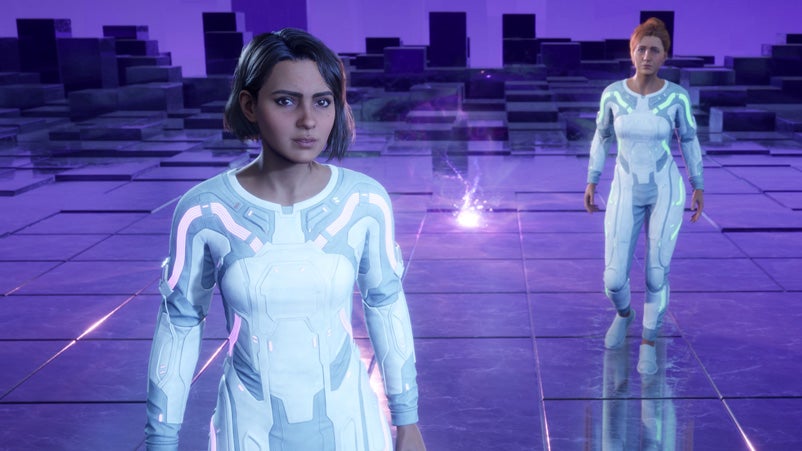of games revolve around combat, but it’s not combat abilities that are the most consistently enjoyable abilities in them. Movement abilities are. It’s a theory that’s become a preoccupation of mine of late, and in every game, I low-key look for evidence to support it. And I think I’ve found some.
Split-Fiction is my latest case study and this platter of co-operative gameplay abounds with movement ideas. By turns it bestows upon you wing suits that hurtle you through the air, jet packs that boost you into the air, jet skis that skim above and duck below the water, and space suits you can nosedive with out of the back of sci-fi drop ships.
Each level imagines a new way for you to move; each level a new way to move. Now, you’re a giant monkey that can climb along vines, or a strange otter that can slip through water at speed; now, you’re a fairy that can piggyback wind currents like jet streams. This game is as obsessed with movement as I seem to be. But that’s all very well for what is essentially a platform game, where movement has always been key. What about games where movement isn’t the primary purpose?
Let’s take Clair Obscur: Expedition 33 as a recent example. This is a turn-based role-playing game about pitched battles with fantastical enemies. Nevertheless, you aren’t in the world for more than five minutes before the game prompts you to cross a Parisian-inspired rooftop with a grappling hook. Why? It never really says, but here you go, do it. The only reason I can think of is that it’s fun. It’s a logic that seems to spread right through the game.
